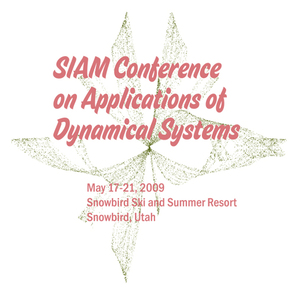
by Chad Topaz, Macalaster
College,
with contributions from Anne Catlla, Jeff Moehlis, and
Evelyn Sander
This year's SIAM Conference on Applications of Dynamical Systems in
Snowbird, Utah (or merely the "Snowbird conference," as it is often
called) was chaired by Jeff Moehlis
(University of California, Santa Barbara) and Bruno
Eckhardt (Universität Marburg). Moehlis, who has researched
the history of this conference, reported in his introductory remarks
that it is the tenth one, and the ninth to take place at
Snowbird. (The full Snowbird conference history
is newly available in the DSWeb Activity Group section.) This
year's conference attracted 736 registrants - an all-time registration
record. These registrants include 129 women, 176 students, and 280
non-US residents representing 29 countries on six continents. The
scientific program included ten invited lectures, approximately 75
posters, 124 minisymposia (consisting of four talks each), and 42
contributed sessions (three to four talks each), totaling over 700
presentations.
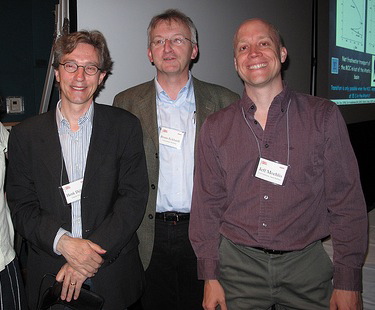
Figure 1: From left to right: Plenary speaker Henk Dijkstra (Utrecht University) and conference co-chairs Bruno Eckhardt (Universität Marburg) and Jeff Moehlis (UCSB). (Photo by Susan Whitehouse, SIAM.)
This year's scientific trends
The scientific program gave thorough coverage to the official
conference themes of climate modeling, biological systems, engineering
systems, Hamiltonian systems, stochastic systems, networks,
uncertainty management, pattern formation, and fluid dynamics. There
was a noticable new focus on climate modeling, building on the
momentum generated by the April 2009 joint AMS/ASA/MAA/SIAM Mathematical Awareness Month on
Mathematics on Climate. These included the minisymposia
Data Assimilation and Control in Weather and Brains,
Dynamic and Stochastic Models for Fluid-Solid Interactions in
Atmospheres-Oceans, and Mathematical
Examples in Climate Change. These minisymposia were met with
enthusiasm by attendees who filled the rooms; at least one
minisymposium talk was so popular that all of the floor space was
taken and the crowd spilled into the hallway. The conference program
also included related invited presentations on The
Multiscale Dynamics of Lightning by Ute Ebert (Centrum voor
Wiskunde en Informatica) and Collapse
of the Atlantic Ocean Circulation by Henk
Dijkstra (Utrecht University).
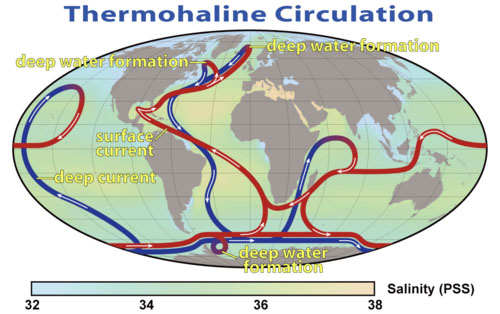
Figure 2: Large scale thermohaline circulation in the Earth's oceans. (Image by Robert Simmon of NASA, released to the public domain, and taken from http://commons.wikimedia.org/wiki/File:Thermohaline_Circulation_2.png.)
Dijkstra's work involves an elegant combination of dynamical systems
theory and physical oceanography. His presentation focused on the
Meridional Overturning Circulation (MOC) in the Atlantic. Like other
large-scale circulation patterns the MOC is responsible for the
transport of large amounts of energy and matter, and hence has the
potential to strongly impact the Earth's climate. Study of the MOC -
and indeed, of ocean models in general - is challenging in part
because there are widely varying scales; mixing takes place across
centimeters, while transport happens across thousands of
kilometers. Furthermore, the models may incorporate millions of
degrees of freedom in order to accurately describe water velocity,
temperature, salinity, and pressure throughout the ocean
system. Dijkstra has simulated these high-dimensional, multi-scale,
multi-parameter ocean models, and pseudo-arclength continuation has
revealed saddle-node bifurcations and the existence of multiple
equilibria. Switching between MOC equilibria plays a key role in
current theories of Dansgaard-Oescheger events, which are rapid
climate fluctuations that occurred 25 times during the last glacial
period.
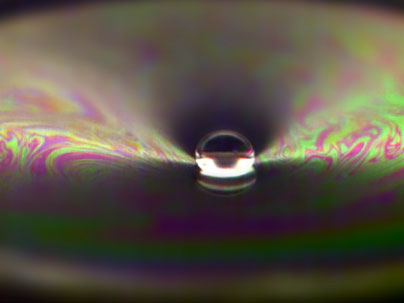
Figure 3: The fluid trampoline system of John Bush (MIT) and Tristan Gilet (University of Liège) which consists of a droplet
bouncing on a soap film. (Image courtesy of John Bush & Tristan Gilet, MIT.)
Another plenary talk looked at fluids on much smaller scales. In The
Fluid Trampoline, John
Bush (Massachusetts Institute of Technology) presented his investigation of droplets falling onto a
horizontal soap film. As motivation for this topic, Bush started his
talk with a movie clip showing the record-winning stone skip (over 50
skips) which drew appreciative gasps from the audience. Movies of his
experiments garnered equal audience appreciation. Droplets on a
vibrating film can be well-described by a Duffing-like differential
equation where the spring constant is measured experimentally. In the
simplest case, the droplet bouncing is synchronous with the vibration,
but as the forcing parameters are varied, there can be a
period-doubling cascade to chaos. Thus, the fluid trampoline is
revealed to be one of the simplest mechanical chaotic
oscillators. Bush tantalized the audience with a conjecture relating
the fluid trampoline to biology: the flying fish is observed to skip
along the surface of water, and Bush wonders if the chaotic
oscillations provide a selective advantage, namely as a superior
method for predator evasion.
SIAM dynamical systems activity group prizes
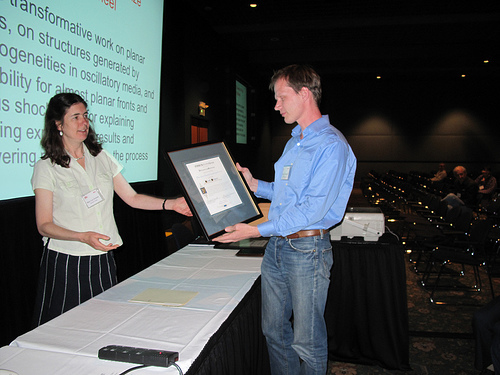
Figure 4:
Dynamical Systems Activity Group Chair Mary Lou Zeeman (Bowdoin
College), presents the J.D. Crawford Prize to Arnd Scheel (University of Minnesota)
for his work on planar defects, osicllatory media, and stability of
fronts and shocks. (Photo by Susan Whitehouse.)
The Snowbird meeting included the presentation of the fifth
J.D. Crawford and Jurgen Moser prizes, both awarded at each Snowbird
conference. The Crawford Prize is awarded to an individual for recent
outstanding work on a topic in nonlinear science. This year's award
was given to Arnd Scheel
(University of Minnesota) "for his transformative work on planar
defects, on structures generated by inhomogeneities in oscillatory
media, and on stability for almost planar fronts and viscous shocks,
and for explaining intriguing experimental results and discovering new
patterns in the process."
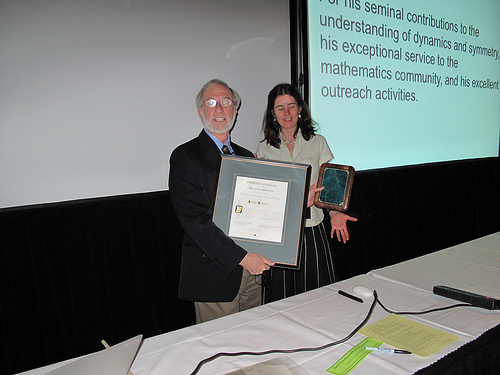
Figure 5: Zeeman presents the Jugen Moser
Lecture Prize to former SIAM president Marty Golubitsky (Ohio State University)
for his mathematical work on dynamics and symmetry as well as for his
service and outreach efforts. (Photo by Susan Whitehouse.)
The Moser Lecture prize, is awarded to a person who has made
distinguished contributions to nonlinear science. This year's award
was given to former SIAM President Marty
Golubitsky (Ohio State University) "for his seminal contributions
to the understanding of dynamics and symmetry, his exceptional service
to the mathematics community, and his excellent outreach activities."
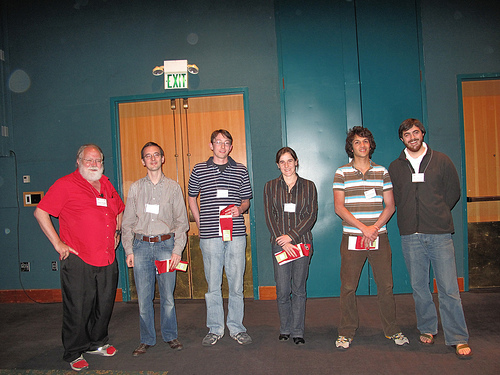
Figure 6: Jim Yorke (University of Maryland) presents the "red
sock awards" to winners of the poster competition. In alphabetical
order: Fernando Blesa (Universidad de Zaragoza), Steven Brunton (Princeton University), Emily
Harvey (University of Auckland), Zachary Kilpatrick (University of Utah), and Christopher Scheper
(Cornell University).
A popular highlight of the Snowbird meeting is the "red sock" awards
for outstanding poster presentations, selected from the many fine
posters displayed at the well-attended evening dessert and poster
session. The red sock awards are organized and presented with flair by
Jim Yorke (University of Maryland), who also provides
the socks. This year's red socks went to the following people (Note
that all winners in the red sock awards receive first place, so this
list is given in alphabetical order): Fernando Blesa (University of
Zaragoza), "Fractals, bifurcations and chaos in open Hamiltonians";
Steven Brunton (Princeton University), "Fast computation of FTLE
fields"; Emily Harvey (University of Auckland), "Multiple timescales
in models of intracellular calcium dynamics"; Zachary Kilpatrick
(University of Utah), "Effects of synaptic depression and adaptation
on spatiotemporal dynamics of an excitatory neuronal network"; and
Christopher Scheper (Cornell University), "Bifurcations of mixed-mode
oscillations in a three-dimensional autocatalator model."
Looking ahead
A panel discussion chaired by John
Guckenheimer (Cornell University) highlighted promising
directions for future work in dynamical systems. He began the session
with a frank discussion of how research within the dynamical systems
community is linked - crucially - to the availability of funding
resources. Along with Julio
Ottino (Northwestern University), he has written a report on future
directions in complex systems which the NSF uses as an aid in
resource planning and allocation. Participants in the panel included
Rachel Kuske (University
of British Columbia), who spoke on the topic of stochastic
dynamics. She emphasized that mathematical neuroscience is an example
where a strong connection between stochastics and dynamical systems
has been made, but that fields such as immunology, epidemiology, and
climate are growth areas for the marriage of stochastics and
dynamics.
Christopher
K.R.T. Jones (University of North Carolina, Chapel Hill) also spoke about
climate change, arguing for the need for a model hierarchy that
accounts for not just for physical processes, but for relevant
sociological, political, and economic ones as well. He also expressed
a hope that work on climate modeling will motivate some fundamental
theoretical developments, similar to how the theory of mixed-mode
oscillations was originally motivated by neuroscience but then was
brought to a more abstract viewpoint. Another trend of note in this
year's conference is the large number of network talks, including
Igor Mezic's (University of Califonia Santa Barbara) plenary talk, and a number of
minisymposia. Networks were also mentioned in the forward looking
discussion as an important area to watch.
Another forward-looking element of the conference was the intriguing
network study conducted by Jonathan
Dawes (University of Bath). Each registrant's meeting materials
included a brief survey of session attendance. Dawes plans to analyze
the data in the hopes of determining patterns of session attendance
and interest, potentially to use for the planning of future
meetings. (An article with data from the session attendance survey
will appear in the January issue of DSWeb Magazine.)
There was a discussion in the activity group business meeting
regarding the location of future meetings. As the repeat location of
Snowbird met with little to no opposition, the location is now booked
for both 2011 and 2013, with the 2011 meeting dates set for
May 22 - 25. Mark your calendars!
Related links:
- Foundations
for Complex Systems Research in the Physical Sciences and
Engineering, co-chairs John Guckenheimer and Julio M. Ottino,
Report from an NSF Workshop, September 2008.
- History of the SIAM Conference on Applications of Dynamical Systems, DSWeb Activity Group section.
- Program of
the 2009 SIAM Conference on Applications of Dynamical Systems
(DS09).
- Slides of Invited Presentations, SIAM Conference on Applications of Dynamical Systems, Snowbird Utah, 2009, DSWeb Tutorials section.